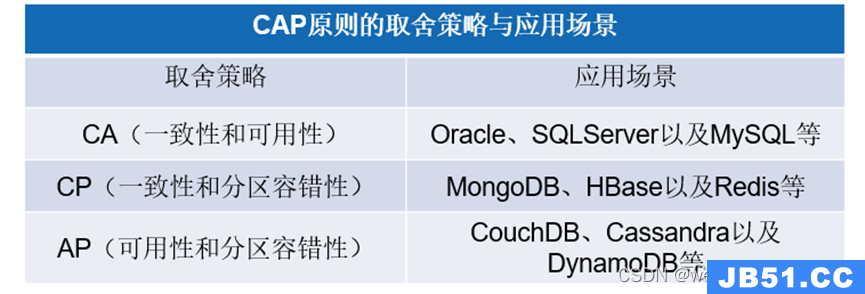我有一种情况,我有多个客户端连接到我的应用程序,我想在同一个Mongo服务器中给每个客户端自己的“架构/数据库”.
我的配置类:
@Configuration
public class MongoDbConfiguration {
@Bean
@Primary
public MongoDbFactory mongoDbFactory() throws UnkNownHostException {
return new MultiTenantMongoDbFactory();
}
@Bean
@Primary
public MongoTemplate mongoTemplate() throws UnkNownHostException {
return new MongoTemplate(mongoDbFactory());
}
}
多租户Db工厂
public class MultiTenantMongoDbFactory extends SimpleMongoDbFactory {
public MultiTenantMongoDbFactory() throws UnkNownHostException {
super(getMongoClient(), TenantContext.getTenant());
}
@Override
public DB getDb() throws DataAccessException {
String tenant = TenantContext.getTenant();
return getDb(tenant);
}
private static MongoClient getMongoClient() {
String tenant = TenantContext.getTenant();
System.out.println("Database name in factory class :"+tenant);
if (tenant.equalsIgnoreCase("ncet")) {
MongoCredential mongoCredential = MongoCredential.createCredential("user1", "db1",
"pwd1".tochararray());
ServerAddress serverAddress = new ServerAddress("localhost", 27017);
MongoClient mongoClient = new MongoClient(serverAddress, Arrays.asList(mongoCredential));
return mongoClient;
}else{
MongoCredential mongoCredential = MongoCredential.createCredential("user1", "db2",
"pwd2".tochararray());
ServerAddress serverAddress = new ServerAddress("localhost", 27017);
MongoClient mongoClient = new MongoClient(serverAddress, Arrays.asList(mongoCredential));
return mongoClient;
}
}
每个数据库都有凭据
解决方法:
您的示例不起作用,因为getMongoClient()在启动期间仅调用一次,但您需要在运行时基于活动租户更改它.基于spring SimpleMongoDbFactory作为示例,实现专用MongoDbFactory以实现多租户非常简单.如果需要,您可以为其添加更多逻辑(对于writeConcern等).
此样本中有两个租户(东部和西部).每个租户都有自己的MongoClient,并在MongoConfig中配置了相应的数据库名称和凭据. TenantDataFactory根据TenantContext中的当前租户返回与租户相关的信息. DB对象是使用TenantClient和TenantDataFactory返回的TenantData的数据库名创建的.
public class MultiTenantMongoDbFactory implements MongoDbFactory {
private PersistenceExceptionTranslator exceptionTranslator;
private TenantDataFactory tenantDataFactory;
public MultiTenantMongoDbFactory(TenantDataFactory tenantDataFactory) {
this.exceptionTranslator = new MongoExceptionTranslator();
this.tenantDataFactory = tenantDataFactory;
}
@Override
public DB getDb(String dbname) throws DataAccessException {
return getDb();
}
@Override
public DB getDb() throws DataAccessException {
Tenant tenant = TenantContext.getCurrentTenant();
TenantData tenantData = tenantDataFactory.getTenantData(tenant);
return Mongodbutils.getDB(tenantData.getClient(), tenantData.getdbname());
}
@Override
public PersistenceExceptionTranslator getExceptionTranslator() {
return exceptionTranslator;
}
}
public class TenantDataFactory {
private Map<Tenant, TenantData> tenantDataMap;
public TenantDataFactory(Map<Tenant, TenantData> tenantDataMap) {
this.tenantDataMap = Collections.unmodifiableMap(tenantDataMap);
}
public TenantData getTenantData(Tenant tenant) {
TenantData tenantData = tenantDataMap.get(tenant);
if (tenantData == null) {
// or return default tenant
throw new IllegalArgumentException("Unsupported tenant " + tenant);
}
return tenantData;
}
}
public enum Tenant {
EAST, WEST
}
public class TenantData {
private final String dbname;
private final MongoClient client;
public TenantData(String dbname, MongoClient client) {
this.dbname = dbname;
this.client = client;
}
public String getdbname() {
return dbname;
}
public MongoClient getClient() {
return client;
}
}
public class TenantContext {
private static ThreadLocal<Tenant> currentTenant = new ThreadLocal<>();
public static void setCurrentTenant(Tenant tenant) {
currentTenant.set(tenant);
}
public static Tenant getCurrentTenant() {
return currentTenant.get();
}
}
@Configuration
public class MongoConfig {
@Bean(name = "eastMongoClient", destroyMethod = "close")
public MongoClient eastMongoClient() {
return new MongoClient(new ServerAddress("127.0.0.1", 27017),
Collections.singletonList(MongoCredential.createCredential("user1", "east", "password1".tochararray())));
}
@Bean(name = "westMongoClient", destroyMethod = "close")
public MongoClient westMongoClient() {
return new MongoClient(new ServerAddress("127.0.0.1", 27017),
Collections.singletonList(MongoCredential.createCredential("user2", "west", "password2".tochararray())));
}
@Bean
public TenantDataFactory tenantDataFactory(@Qualifier("eastMongoClient") MongoClient eastMongoClient,
@Qualifier("westMongoClient") MongoClient westMongoClient) {
Map<Tenant, TenantData> tenantDataMap = new HashMap<>();
tenantDataMap.put(Tenant.EAST, new TenantData("east", eastMongoClient));
tenantDataMap.put(Tenant.WEST, new TenantData("west", westMongoClient));
return new TenantDataFactory(tenantDataMap);
}
@Bean
public MongoDbFactory mongoDbFactory(@Autowired TenantDataFactory tenantDataFactory) {
return new MultiTenantMongoDbFactory(tenantDataFactory);
}
@Bean
public MongoTemplate mongoTemplate(@Autowired MongoDbFactory mongoDbFactory) {
return new MongoTemplate(mongoDbFactory);
}
}





